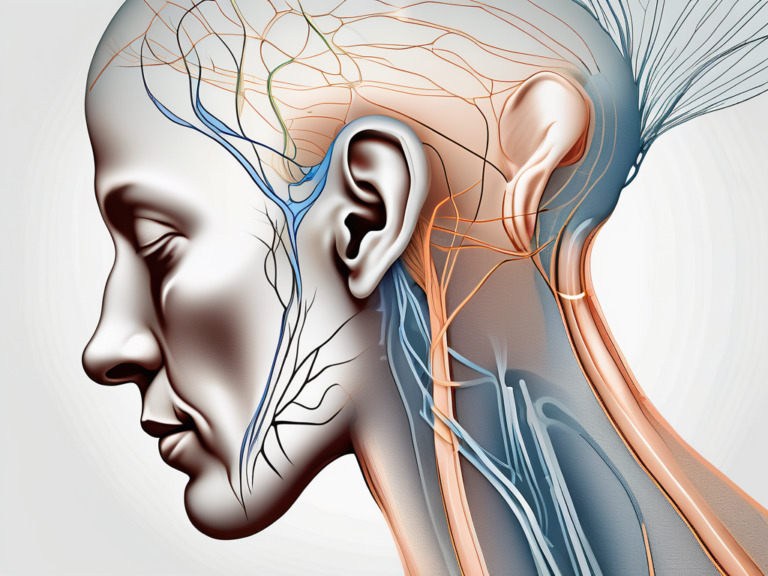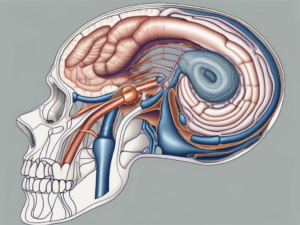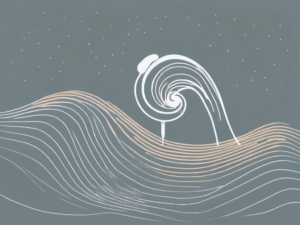The vestibular nerve is an essential component of the human body’s intricate sensory system. Understanding the function and significance of this nerve is crucial to comprehend various physiological processes and potential disorders. In this article, we will delve into the anatomy, functions, and disorders related to the vestibular nerve. With a focus on its connection to the auditory system, balance, and the central nervous system, we will explore its multifaceted role in maintaining equilibrium and spatial orientation.
Understanding the Vestibular Nerve
The vestibular nerve is a fascinating component of the human body that plays a crucial role in our ability to perceive motion, maintain balance, and spatial orientation. Let’s delve deeper into the anatomy and function of this remarkable nerve.
Anatomy of the Vestibular Nerve
First and foremost, let’s explore the anatomical aspects of the vestibular nerve. Situated within the inner ear, this nerve is one of the two major components of the vestibulocochlear nerve, alongside the auditory nerve. Comprised of primary and secondary vestibular neurons, the vestibular nerve carries signals from the vestibular labyrinth, a specialized structure responsible for detecting motion and spatial orientation.
The primary vestibular neurons are located within the vestibular ganglion, a cluster of cell bodies situated near the inner ear. These neurons receive signals from the hair cells in the vestibular labyrinth, which are responsible for converting mechanical motion into electrical signals. The secondary vestibular neurons then relay these signals to the central nervous system, specifically the brainstem and cerebellum.
Functionally, the vestibular nerve connects the vestibular system, which senses motion, with the central nervous system. This connection allows for the transmission of crucial information related to balance, head position, and body movement. In conjunction with other sensory inputs, the vestibular nerve aids in the maintenance of our stability, be it during static or dynamic activities.
Function of the Vestibular Nerve
The main function of the vestibular nerve revolves around our ability to perceive motion, maintain balance, and spatial orientation. In response to changes in head position or movement, the vestibular nerve sends signals to the brain, which then processes this information and enables appropriate motor responses.
One of the remarkable reflexes mediated by the vestibular nerve is the vestibulo-ocular reflex (VOR). This reflex ensures that our eyes remain fixed on an object while the head is in motion. By coordinating the movements of the eyes and head, the VOR allows us to maintain a clear and stable visual perception, reducing blur and enhancing overall visual acuity.
Additionally, the vestibular nerve contributes to other important reflexes, such as the vestibulospinal reflex. This reflex helps us maintain an upright posture and make necessary adjustments to our body position in response to changes in the environment.
Furthermore, the vestibular nerve plays a crucial role in our sense of spatial orientation. It provides the brain with information about the position of our head in relation to gravity, allowing us to navigate our surroundings with precision and accuracy.
In summary, the vestibular nerve is a remarkable component of the human body that enables us to perceive motion, maintain balance, and navigate our environment. Its intricate anatomy and vital functions make it an essential part of our sensory and motor systems.
The Vestibular Nerve and the Auditory System
The vestibular nerve is a crucial component of our sensory system, responsible for maintaining balance and spatial orientation. However, its role extends beyond just balance. It also shares a connection with the auditory system, specifically with the cochlea, the organ responsible for hearing.
When we think about the auditory system, we usually associate it with the cochlea and the processing of sound waves. However, the vestibular nerve plays a significant role in regulating the sensitivity and responsiveness of the auditory system. Through its connection to the cochlea, it contributes to our ability to hear and interpret sounds.
One fascinating aspect of the vestibular nerve’s involvement in the auditory system is its contribution to spatial hearing. Spatial hearing allows us to locate the direction of sounds in our environment. It is what enables us to identify whether a sound is coming from the left, right, front, or back. This ability to perceive the spatial location of sounds is essential for our overall auditory experience and helps us navigate our surroundings.
Connection between the Vestibular Nerve and the Cochlea
The vestibular nerve’s connection to the cochlea is a complex and intricate interplay. It involves the transmission of signals and information between these two vital components of our sensory system. This connection allows for the seamless integration of balance and auditory functions.
Within the cochlea, the vestibular nerve influences the mechanics and physiology of sound processing. It helps regulate the sensitivity of the cochlea to different sound frequencies, ensuring that we can perceive a wide range of sounds accurately. Additionally, the vestibular nerve aids in discriminating between different frequencies, allowing us to distinguish between various pitches and tones.
Furthermore, the vestibular nerve’s involvement in the auditory system is not limited to the cochlea alone. It also interacts with other structures and pathways, such as the brainstem and the auditory cortex. These interactions further enhance our ability to process and interpret auditory information.
Role of the Vestibular Nerve in Hearing
While the cochlea is primarily responsible for handling auditory information, it is essential to recognize the significant influence of the vestibular nerve on the hearing process. Dysfunction or damage to the vestibular nerve can potentially lead to disturbances in hearing ability.
Individuals with vestibular nerve-related hearing impairments may experience difficulties in sound localization. Sound localization refers to the ability to determine the direction from which a sound is coming. Without the proper functioning of the vestibular nerve, this ability may be compromised, making it challenging to accurately identify the source of sounds in our environment.
Additionally, vestibular nerve-related hearing impairments can affect our ability to discriminate between different frequencies. This impairment may result in difficulties in perceiving and distinguishing sounds of varying pitches or tones.
It is crucial to note that vestibular nerve-related hearing impairments are relatively rare and often occur in conjunction with severe balance disturbances. If individuals experience any changes in their hearing, it is essential to seek consultation with a healthcare professional for a comprehensive evaluation and appropriate management.
The Vestibular Nerve and Balance
The vestibular nerve plays a vital role in maintaining equilibrium. It is responsible for swiftly transmitting information regarding head position, angular acceleration, and linear acceleration, allowing our bodies to make rapid adjustments to stay balanced.
Imagine walking on a narrow beam suspended high above the ground. Without the vestibular nerve, this seemingly simple task would become nearly impossible. The nerve’s intricate contribution to equilibrium ensures that we can navigate various terrains, from uneven surfaces to slippery slopes, with relative ease.
Disorders affecting the vestibular nerve can have debilitating consequences. Vertigo, a sensation of spinning or dizziness, can make even the simplest tasks challenging. Imagine trying to walk in a straight line when the world around you feels like it’s constantly spinning. This symptom, often associated with vestibular nerve disorders, can severely impact an individual’s quality of life.
Additionally, unsteadiness, another common symptom, can make performing everyday activities a struggle. Imagine trying to pour a glass of water or climb a flight of stairs when your sense of balance is compromised. Seeking medical attention for accurate diagnosis and appropriate intervention is crucial in managing these symptoms and regaining stability.
Vestibular Nerve’s Impact on Spatial Orientation
Our ability to gauge our body’s position and spatial orientation relies on the seamless interplay of various sensory inputs, with the vestibular nerve being a crucial component of this process.
Think about how you navigate through a crowded room or find your way in a new city. Your brain constructs an accurate representation of your surroundings by integrating information from the vestibular system, vision, and proprioception.
The vestibular nerve’s contribution to spatial orientation becomes evident when it is compromised. Individuals with vestibular nerve disorders may experience difficulties orienting themselves in a specific environment. Simple tasks like driving or walking through a crowded space can become overwhelming and anxiety-inducing.
Imagine trying to parallel park your car when your sense of spatial orientation is distorted. The task becomes a daunting challenge, as judging distances and angles accurately becomes nearly impossible. Seeking medical evaluation and guidance can offer appropriate support for those struggling with spatial orientation issues, helping them regain confidence and independence in their daily lives.
Understanding the intricate role of the vestibular nerve in maintaining balance and spatial orientation highlights the importance of its proper functioning. By seeking medical attention and appropriate interventions, individuals can overcome the challenges posed by vestibular nerve disorders and regain control over their equilibrium and spatial awareness.
Disorders Related to the Vestibular Nerve
The vestibular nerve is a crucial component of the inner ear, responsible for transmitting sensory information about balance and spatial orientation to the brain. When this nerve is affected by disorders, it can lead to a range of symptoms that can significantly impact an individual’s daily life.
Symptoms of Vestibular Nerve Disorders
Vestibular nerve disorders can manifest in a range of symptoms, with varying degrees of severity. Common symptoms include vertigo, a spinning sensation that can be accompanied by nausea and vomiting, dizziness, imbalance, and difficulties with coordination.
Vertigo, one of the hallmark symptoms of vestibular nerve disorders, can be an incredibly distressing experience. Imagine feeling as if the world around you is spinning uncontrollably, making it difficult to stand, walk, or even perform simple tasks. This sensation can last for minutes, hours, or even days, leaving individuals feeling disoriented and unable to function normally.
Additionally, individuals may experience sensitivity to motion, known as motion sickness, or find it challenging to focus or concentrate due to constant feelings of unsteadiness. These symptoms can significantly impact an individual’s ability to perform daily activities, such as driving, working, or even enjoying leisurely pursuits.
Living with vestibular nerve disorders can be emotionally and physically challenging. The constant fear of experiencing vertigo or losing balance can lead to anxiety and social isolation. Simple tasks like going up and down stairs or navigating crowded spaces can become daunting and overwhelming.
Should any of these symptoms arise, it is essential to consult with a medical professional to determine the underlying cause and pursue appropriate management strategies.
Diagnosis and Treatment of Vestibular Nerve Disorders
Diagnosing vestibular nerve disorders often involves a comprehensive assessment, which may include a thorough medical history evaluation, physical examination, and specialized tests such as electronystagmography and vestibular evoked myogenic potentials. These examinations help to pinpoint the source of the dysfunction and guide appropriate treatment strategies.
Electronystagmography is a test that measures involuntary eye movements, which can provide valuable information about the functioning of the vestibular system. By analyzing these eye movements, healthcare professionals can gain insights into the specific nature of the vestibular nerve disorder and tailor treatment accordingly.
Vestibular evoked myogenic potentials, on the other hand, assess the electrical activity of certain muscles in response to sound or vibration. This test can help determine if the vestibular nerve disorder is caused by damage to the inner ear or other underlying factors.
The treatment of vestibular nerve disorders varies depending on the underlying cause and severity of the symptoms. Various therapeutic interventions, including medication, vestibular rehabilitation exercises, and lifestyle modifications, can assist in managing symptoms and improving overall quality of life.
Medications such as anti-nausea drugs, antihistamines, or benzodiazepines may be prescribed to alleviate symptoms like vertigo and nausea. These medications can provide temporary relief and help individuals regain a sense of stability and control.
Vestibular rehabilitation exercises are a crucial component of treatment for vestibular nerve disorders. These exercises aim to retrain the brain to compensate for the imbalances caused by the disorder. By gradually exposing individuals to controlled movements and exercises, the brain can learn to adapt and regain a sense of balance and coordination.
Lifestyle modifications, such as avoiding triggers like bright lights or certain foods, can also play a significant role in managing symptoms. Additionally, stress management techniques, such as meditation or counseling, can help individuals cope with the emotional toll of living with a vestibular nerve disorder.
It is essential to work closely with a healthcare professional experienced in vestibular disorders to tailor an individualized treatment plan. With the right support and management strategies, individuals with vestibular nerve disorders can regain control over their lives and find ways to navigate the world with confidence and stability.
The Vestibular Nerve in the Central Nervous System
Vestibular Nerve’s Connection to the Brain
Beyond its peripheral functions, the vestibular nerve also plays a crucial role in the central nervous system. Within the brain, the vestibular nerve connects to areas responsible for processing sensation, motor control, and cognitive functions.
This intricate network of connections allows for the integration of vestibular information with other sensory inputs, enabling coordinated movement and accurate perception of our environment. The vestibular nerve’s integration into the central nervous system highlights its significance in holistic body functioning.
When the vestibular nerve receives signals from the inner ear, it relays this information to the brainstem, specifically the vestibular nuclei. These nuclei are located in the lower part of the brainstem and serve as important processing centers for vestibular information.
From the vestibular nuclei, the information is then transmitted to various areas of the brain, including the cerebellum, thalamus, and cerebral cortex. The cerebellum, known as the “little brain,” is responsible for coordinating voluntary movements, maintaining balance, and fine-tuning motor control.
The thalamus acts as a relay station, receiving information from the vestibular nuclei and sending it to the cerebral cortex, which is responsible for higher-order cognitive functions, such as perception, attention, and decision-making.
Through these connections, the vestibular nerve ensures that information about our body’s position, movement, and orientation in space is processed and integrated with other sensory inputs, allowing us to navigate our surroundings with precision and accuracy.
Role of the Vestibular Nerve in the Nervous System
Within the central nervous system, the vestibular nerve contributes extensively to various physiological processes, including attention, posture, and the modulation of autonomic responses. Disruptions to this intricate neural pathway can lead to disturbances in these functions and impact an individual’s overall well-being.
Attention plays a vital role in our ability to focus and concentrate on specific tasks or stimuli. The vestibular nerve, through its connections with the brain’s attention networks, helps regulate attentional processes. Any dysfunction in this pathway can result in difficulties with concentration, attention deficits, or even attention-related disorders.
Posture, the alignment and positioning of our body, is also influenced by the vestibular nerve. It provides continuous feedback to the brain about the body’s orientation in space, allowing for the adjustment of muscle tone and joint movements to maintain an upright posture. When the vestibular nerve is compromised, individuals may experience postural instability, dizziness, or problems with balance.
The vestibular nerve’s impact on autonomic responses is another crucial aspect of its role in the nervous system. Autonomic responses are automatic physiological reactions that occur without conscious control, such as changes in heart rate, blood pressure, and sweating. The vestibular nerve helps regulate these responses, ensuring appropriate physiological adjustments in different situations. Dysfunction in this pathway can lead to autonomic dysregulation, resulting in symptoms like dizziness, lightheadedness, or abnormal sweating patterns.
Given the extensive and complex role of the vestibular nerve within the nervous system, individuals experiencing related issues should seek professional evaluation to identify any potential underlying conditions and develop a comprehensive management plan. Understanding the intricate connections and functions of the vestibular nerve can aid in the diagnosis and treatment of vestibular disorders, ultimately improving the overall well-being and quality of life for affected individuals.
In Conclusion
The vestibular nerve, as a vital branch of the vestibulocochlear nerve, plays an integral role in maintaining balance, spatial orientation, and hearing. Its functional contributions to the auditory system, equilibrium, and the central nervous system highlight its multifaceted nature. Disorders related to the vestibular nerve can lead to significant impairments in daily life, emphasizing the importance of seeking medical evaluation and guidance when experiencing symptoms. As a unique neural pathway, the vestibular nerve provides insights into the intricate interplay between the auditory and vestibular systems, furthering our understanding of the complexities of human physiology.









+ There are no comments
Add yours